Postcards from Nova Scotia: Part 1
From Yarmouth to Peggy's Cove: Colors, favorite eats and a cool lighthouse!
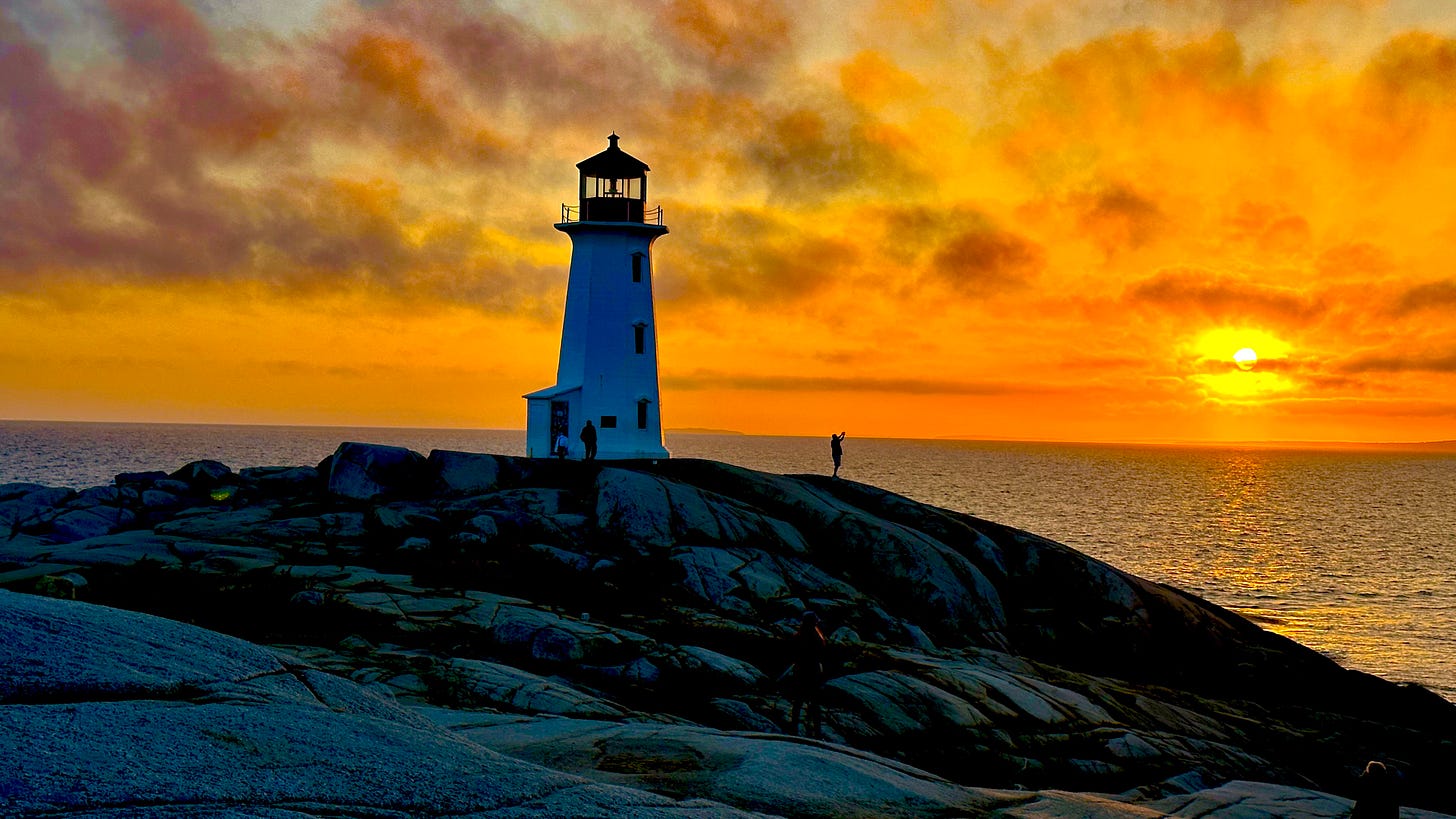
If you enjoy these posts, please tell your friends and followers to subscribe to Ruthtalksfood. It would mean a lot to me!
Greetings from Peggy’s Cove, Nova Scotia, the Canadian province best known for its lighthouse, possibly the most photographed landmark in the province, and for its picturesque community and friendly people. After several days in this town of fewer than three dozen residents, we’re already getting mistaken for locals—and we’re beginning to wish we were! But, as is the nature of travel, we’re moving on. Here are a few highlights from where we’ve been!
We started with Victorian houses and storefronts in Yarmouth, Nova Scotia, where we landed after taking a high-speed ferry called The CAT from Bar Harbor, Maine. (I wrote a little about that in my last post.)
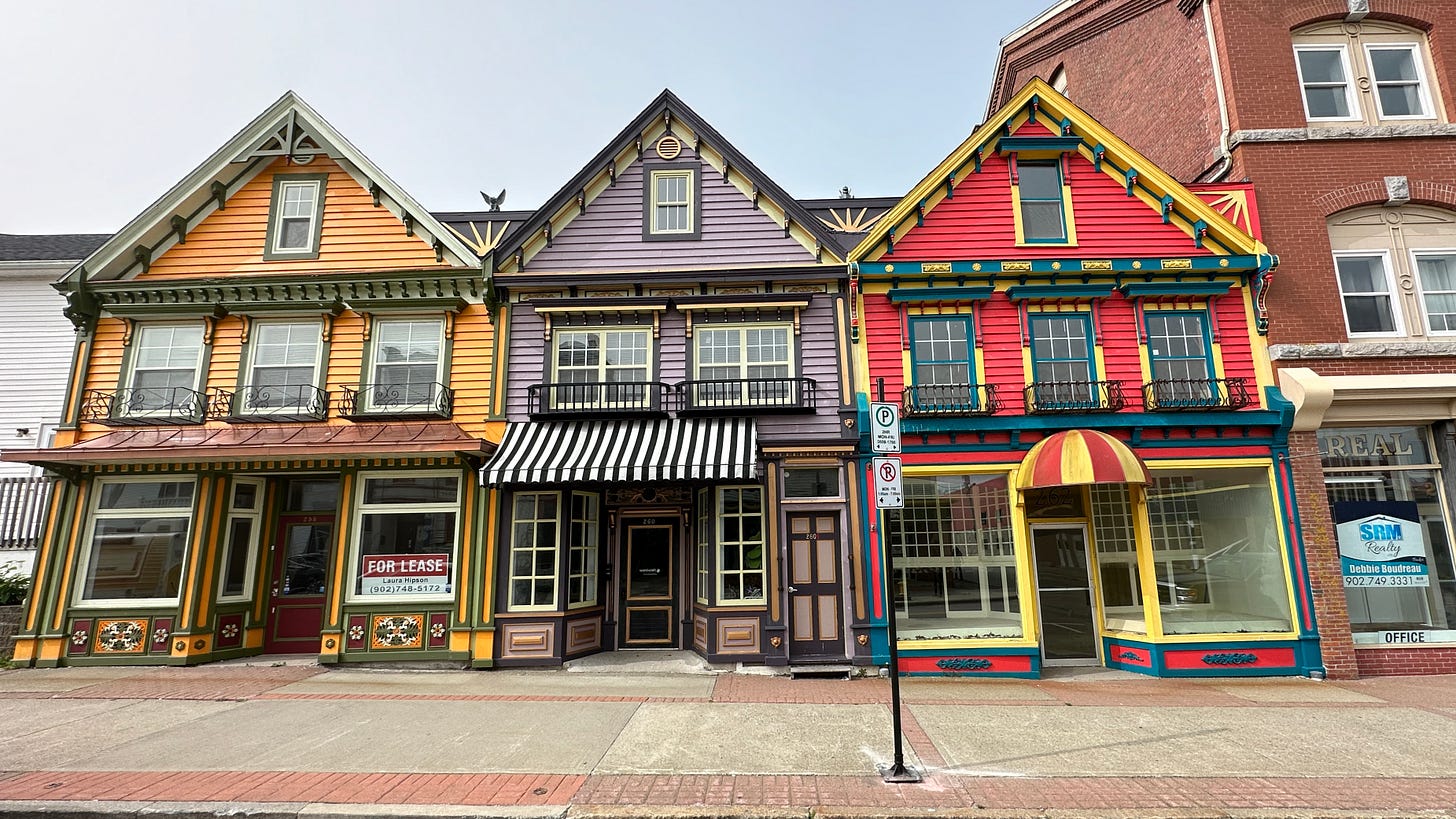
Yarmouth is a quiet town that like so many other seaport communities in this maritime province depends on fishing and tourism. Its signature Victorian buildings hail back to its heyday as a shipbuilding powerhouse in the late 19th century. As elsewhere in Nova Scotia, most of the tourist action is from May through October, though the season for lobster fishing—so vital to this area—runs from the end of November through May.
Near the waterfront, we an astonishing array of lobster traps sitting idle. But we also made little serendipitous discoveries, including a cool shop with both vintage and recent finds in what looked to be a large Victorian-era structure desperately in need of a paint job.
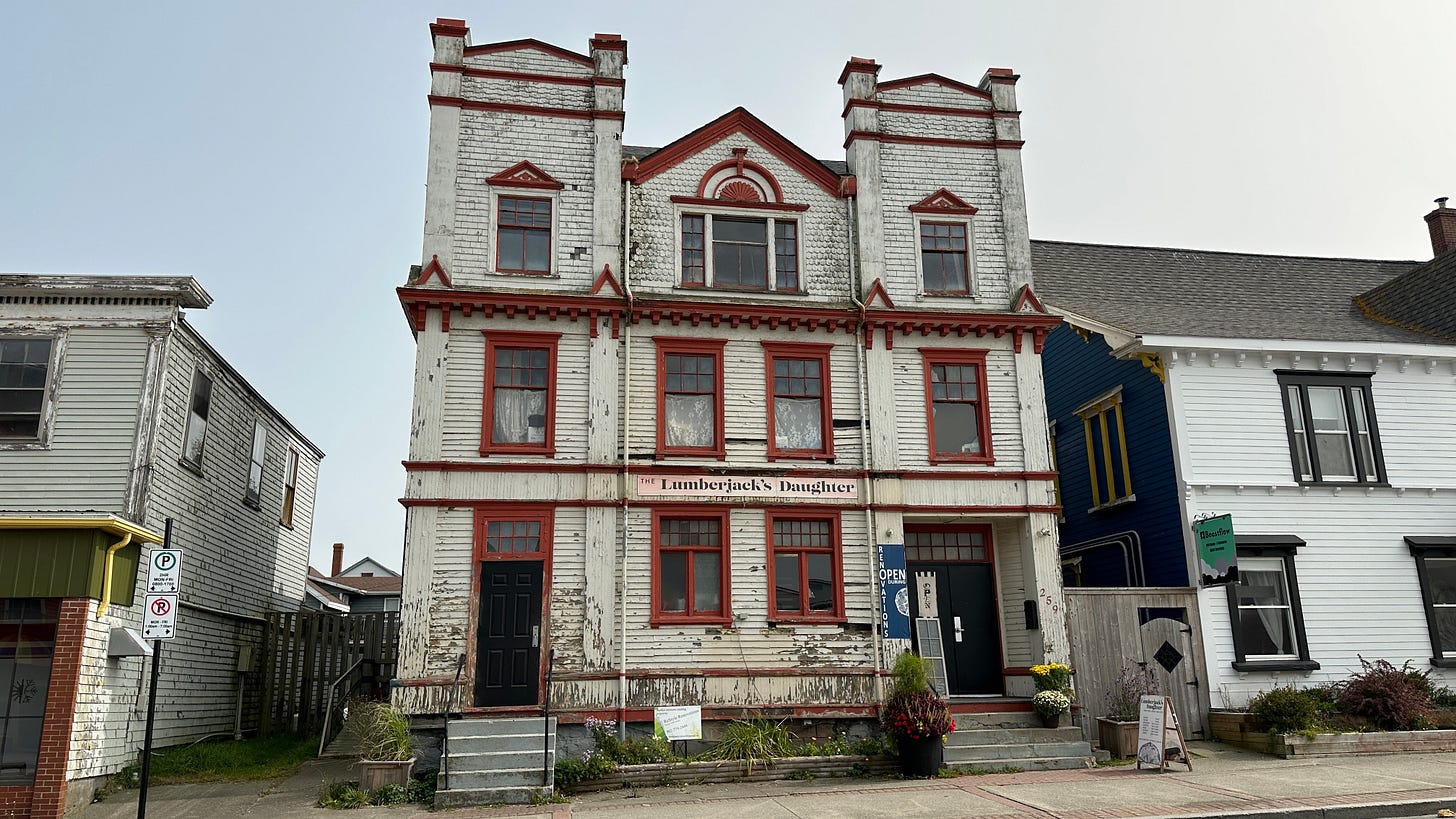
I was intrigued by the name, The Lumberjack’s Daughter, and the sign that said it was open during renovations. Jillian Ford, who is indeed the daughter of a lumberjack, and her husband decided to purchase the former church a year ago and are currently “camping out” in it while they renovate it, including painting it in “gothic hues,” (I noticed deep purple on one side of the building), a process that may take as much as five years, she said. But it’s a labor of love (and positive thinking!) that she and her husband are documenting on YouTube.
In the course of our conversation, we got to talking about food—my favorite topic, as you probably know—and it turns out soup is Jillian’s thing. She’s always coming up with new recipes and speculated that she could probably make a new soup everyday for a year without repeating herself! She shared a recipe for Cheeseburger Soup (yes, ground beef, mustard and dill pickles are part of the mix) that she swears is really delicious! It’s Jillian’s own invention, and I may just write about it in a future post once I’ve tested it in my home kitchen! Stay tuned!
Our eyes play Trix!
After Yarmouth we moved on to a stay near Mahone Bay and Lunenburg, two hotspots also filled with a rainbow palette of history and color. As my cereal-loving husband Jeff put it, traveling through these places “is like diving into a box of Trix.” And indeed, as in the old commercial, there are “raspberry red, lemon yellow and orange orange” houses, retail establishments, boats and everything else, along with blues, greens, purples and every other hue! (Ironically, the original commercial that introduced the Trix rabbit in 1959 was in black and white!)

As we learned in these towns where fishing was and apparently still is the key industry (along with tourism), the bright colors were helpful to the mariners who were trying to find their way back home from foggy or stormy seas.
Captains of fishing vessels in the 1800s often painted their brigs and homes the same color, both for easy identification and to use up excess paint, according to a Rough Guides post on Lunenburg.
In 1995 the town was declared a UNESCO World Heritage Site. The UNESCO description of Lunenburg’s historical significance calls it “the best surviving example of a planned British colonial settlement in North America.” Sadly, we didn’t spend enough time there, but long enough to be blown away by the colors and to enjoy the company of Susan Otto-Bain and Rick Bain, talented glass and tie-dye artists.

Here’s Jeff’s PhotowalksTV episode on some of the colorful sights we saw in the first part of our trip:
Peggy’s Cove
After 10 days, we’re staying in our fifth lodging and about to move on to our sixth. The one where I’m sitting now is in Peggy’s Cove, Nova Scotia and is our favorite so far: an AirBnB with an apt name, “The Cozy Cottage,” in a tiny fishing village with a population of about 30! (This is not a misprint! We asked Nicole, our AirBNB landlady, who lives here, to name all of the residents, and she actually could!)

The lighthouse (see lead photo above!), is one of more than 160 in the province. Just a short walk from the little apartment where we stayed, it’s situated above a popular takeout restaurant, Tom’s Lobster Shack. Popular, I say, because from April to November sightseers pour in on buses, many from cruise ships that dock in nearby Halifax—and every business in town, whether eatery or gift shop, is flooded with visitors, but usually just from 10 to 3, though sometimes as late as 5, when most of the tour buses depart and the town again belongs to the few who reside here or the lucky ones who have managed to snag a room.
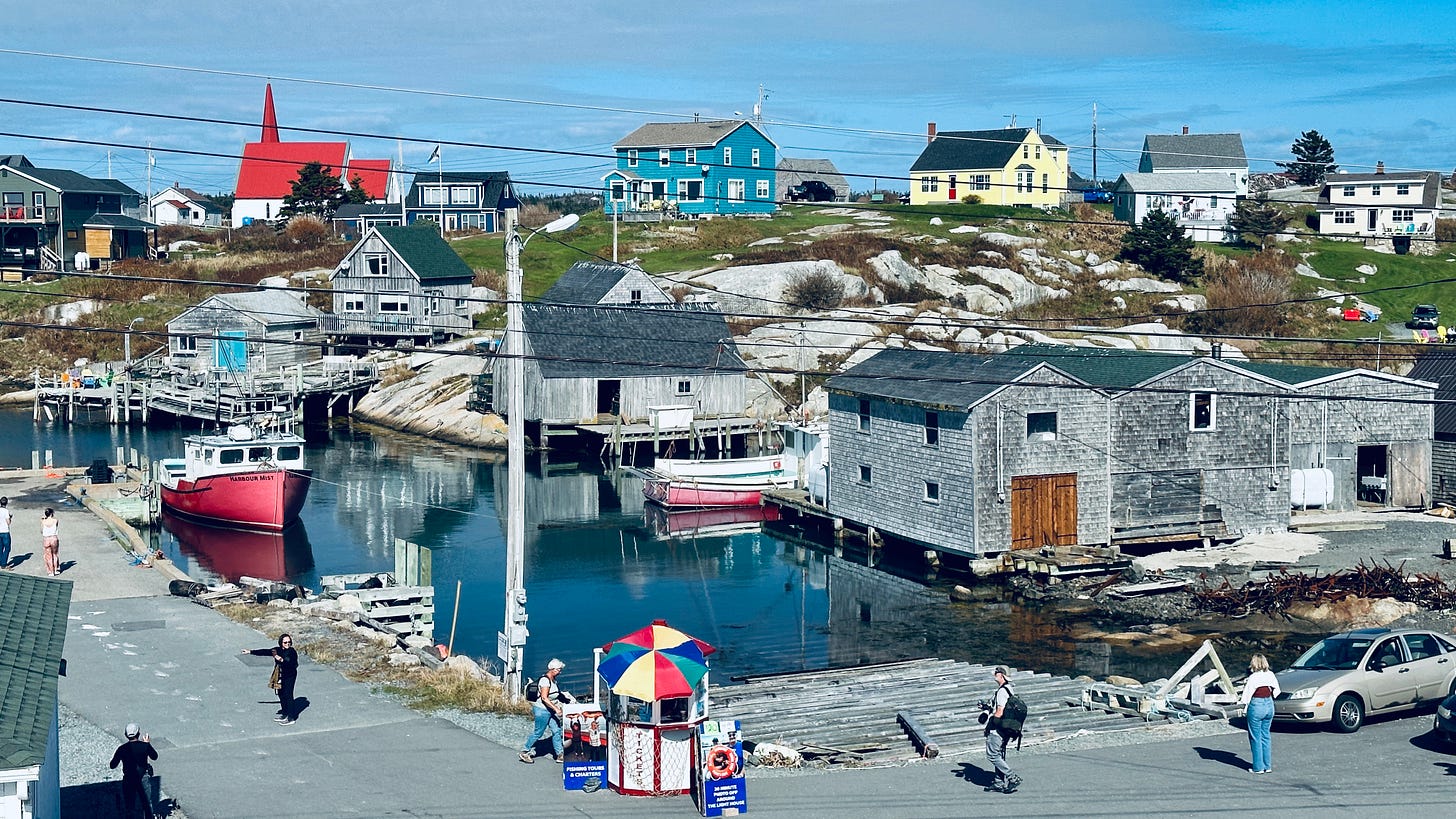
Unfortunately when we went down to Tom’s Lobster Shack, the eatery was out of almost everything—including not only lobster rolls (served in one of four ways—truffle, cajun, classic and “naked”), but also smoked salmon bagels (Nova Scotia smoked salmon, herb cream cheese, red onions, cucumber and capers), and the Montreal smoked meat sandwich (smoked beef brisket, mustard and pickle on sourdough bread). Our consolation prize was a double scoop of strawberry and vanilla ice cream on a sugar cone. But I couldn’t get that bagel out of my mind. I finally got to enjoy it the next day!

The buses come to town
On one of the three days we were in Peggy’s Cove, we watched bus after bus drive up the tiny Main Street to the parking lot behind the one dine-in establishment in town, the Sou’Wester, a spacious family-owned restaurant and gift shop that opened in 1967 as a 5-table tearoom.
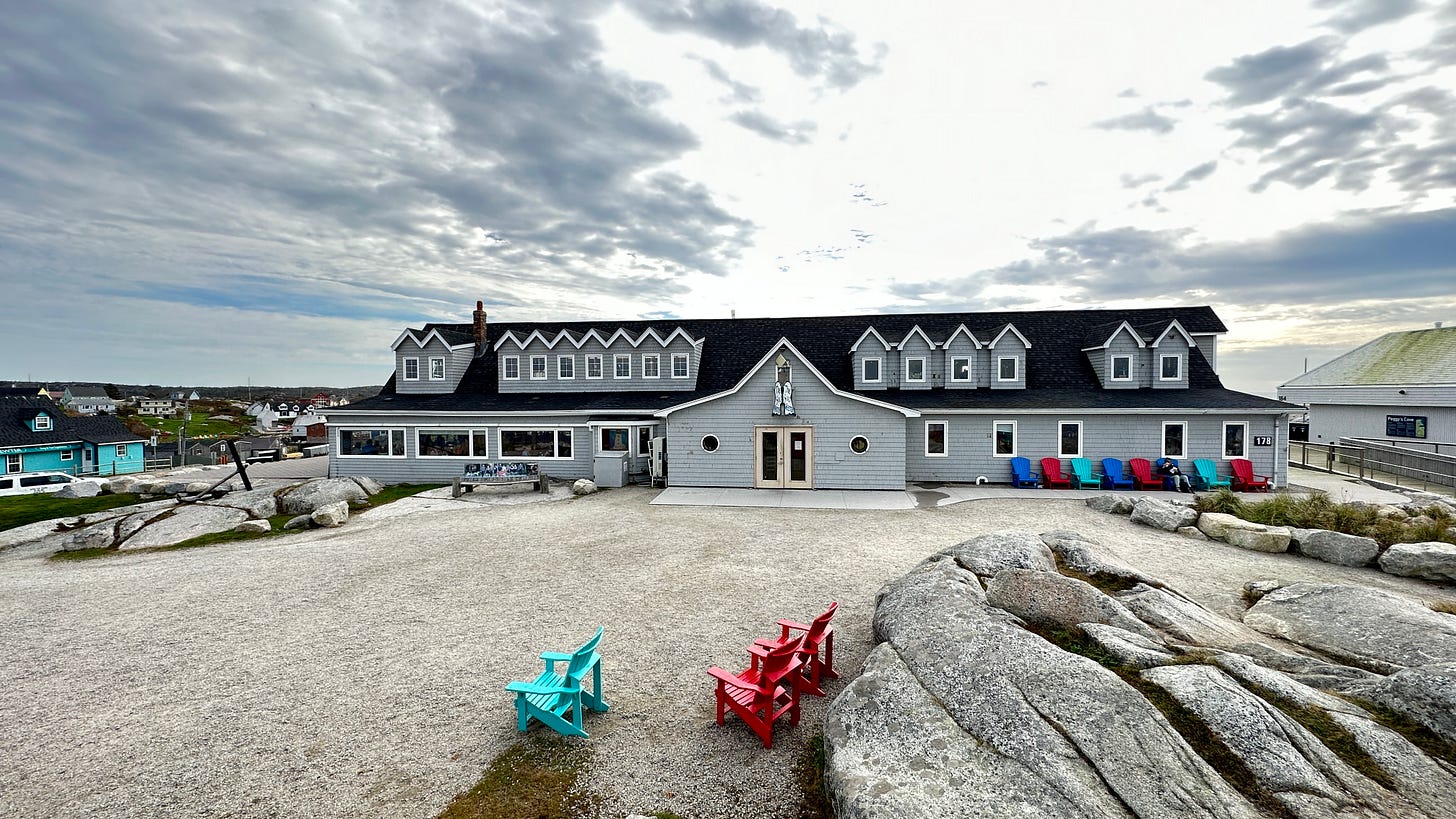
Diners have a perfect view of the 108-year-old lighthouse which sits on an astonishing expanse of granite rocks on which people delight in scrambling, angling for the perfect lighthouse picture despite warnings of danger and high, unexpected waves. “We’re all trained in first aid,” Nicole Campbell, the owner of our cottage and the granddaughter of the founder of the Sou’Wester restaurant, told us. “We’ve seen a lot of injuries.”
More food notes

Everyone is already asking: “So what has been your favorite meal so far?” After being disappointed with a expensive but mushy lobster roll I ate much too quickly in Bar Harbor, I was a little leery of eating more lobster, despite its omnipresence on Nova Scotian menus, just as was the case in Maine.
I grew up in a home where no shellfish (or pork) was served, as my parents kept what might be called a “kosher-style” home, but when I travel, I attempt to sample some of the more popular dishes on the menu—and lobster seems to be everywhere on this trip! However, after my Maine experience, I opted to broaden my horizons beyond the ubiquitous crustacean. I ordered a thick and creamy fish chowder that I adored at a little restaurant called Finer Diner, a few miles from Peggy’s Cove. (It did have lobster, but mixed with all that haddock and cream, I hardly tasted it!)
In Peggy’s Cove, where we ate daily at the only sit-down restaurant in town, The Sou’Wester, the breakfast was just huge—enough to stop you from eating anything else for the rest of the day (but of course, we didn’t obey our stomachs!). Along with eggs, thick slices of whole wheat bread and chunky fried potatoes, it included fish cakes—a popular item that our server patiently explained how to make at home:
“You take salt cod, soak it overnight to get some of the salt out of it. You boil some potatoes and mash it all together. Then you sauté as much onion as you can and add that, a whole lot of butter, some salt and pepper, then form it into a patty like a hamburger and fry it in a pan until it’s really crisp.”
Now I’m wondering if I can find some salt cod in California and try making it myself!
Also notable at the Sou’Wester was the beer-battered local haddock (haddock seems to be the most popular local fish, but there were also halibut tacos and plenty of lobster choices), and for dessert, the apple crisp couldn’t be beat!
One thing on my list that I haven’t yet tasted on this trip: scones! Hopefully I’ll find some great ones on the next leg of our journey, given the deep Scottish heritage of Nova Scotia (starting with the name!) and of Canada.
A map of our journey
In case you’re in the dark about where we’ve been in Nova Scotia, here’s a map of the route so far.
Next up: Cape Breton Island, where we expect to get a taste of the area’s deep-rooted Celtic culture at the Celtic Colours International Festival. I’ll tell you all about it soon.
Have you spent any time in Nova Scotia or elsewhere in Canada? If you have, I’d love to hear about it!
See you next time!
Ruth




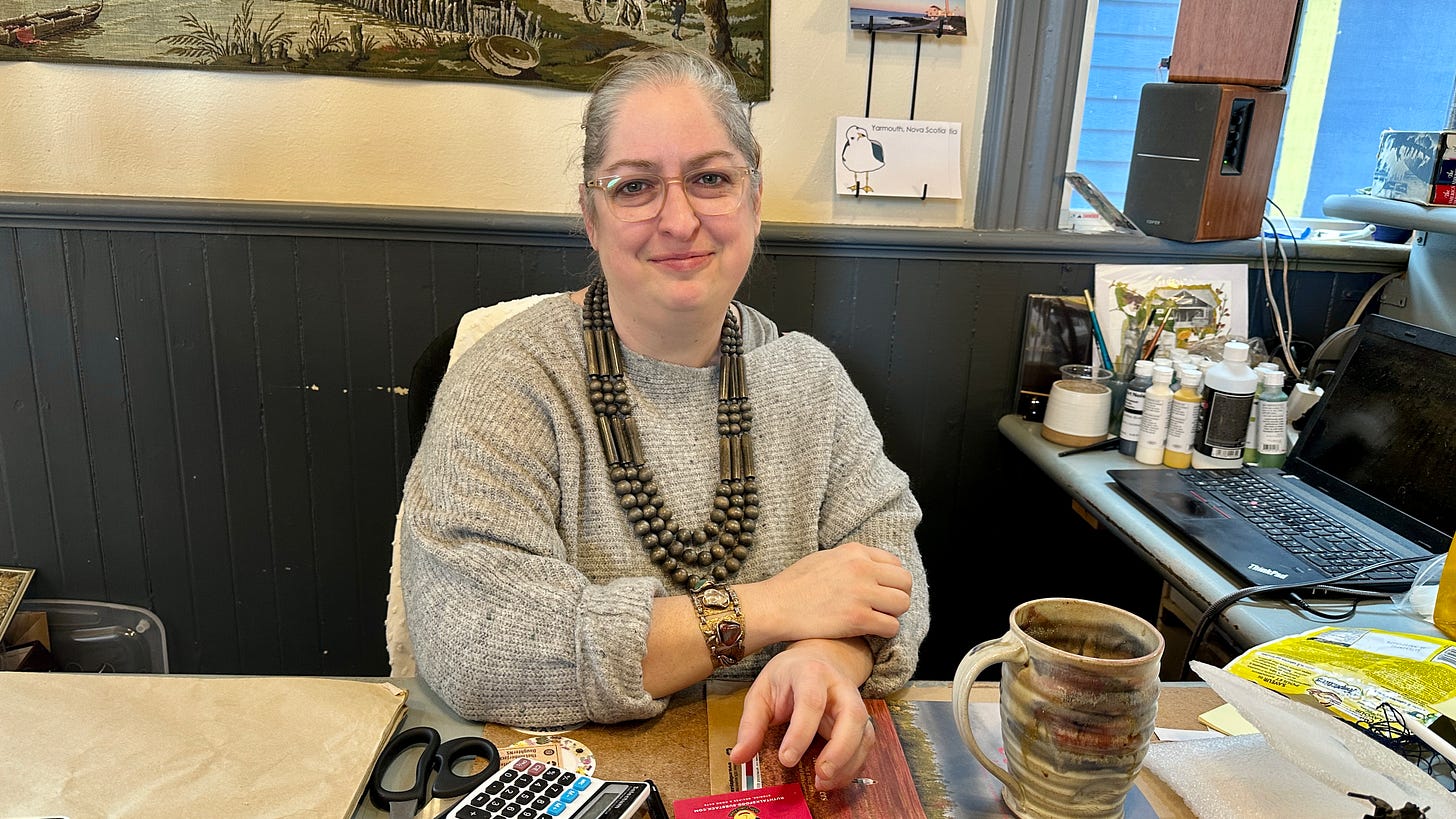


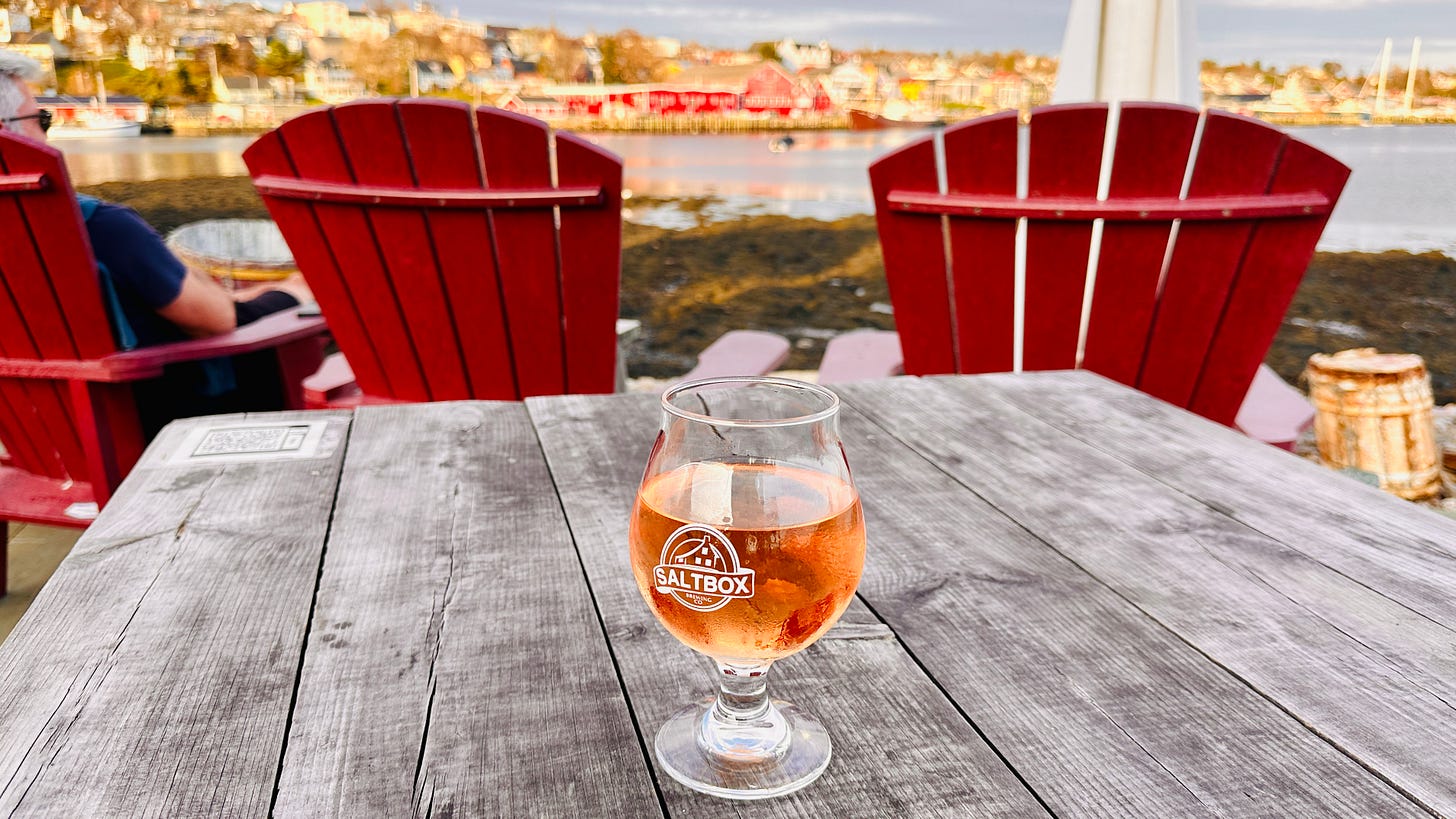




Lovely photos, Ruth! Yarmouth is beyond charming!
Omg, Ruth, I was with a friend today on the other side of the bay in St Andrews today! I’m stalking you.